| Main | Topics and categories | Tasks and projects |
The Politics portal
Politics (from Ancient Greek πολιτικά (politiká) 'affairs of the cities') is the set of activities that are associated with making decisions in groups, or other forms of power relations among individuals, such as the distribution of resources or status. The branch of social science that studies politics and government is referred to as political science.
It may be used positively in the context of a "political solution" which is compromising and non-violent, or descriptively as "the art or science of government", but also often carries a negative connotation. The concept has been defined in various ways, and different approaches have fundamentally differing views on whether it should be used extensively or in a limited way, empirically or normatively, and on whether conflict or co-operation is more essential to it.
A variety of methods are deployed in politics, which include promoting one's own political views among people, negotiation with other political subjects, making laws, and exercising internal and external force, including warfare against adversaries. Politics is exercised on a wide range of social levels, from clans and tribes of traditional societies, through modern local governments, companies and institutions up to sovereign states, to the international level.
In modern nation states, people often form political parties to represent their ideas. Members of a party often agree to take the same position on many issues and agree to support the same changes to law and the same leaders. An election is usually a competition between different parties.
A political system is a framework which defines acceptable political methods within a society. The history of political thought can be traced back to early antiquity, with seminal works such as Plato's Republic, Aristotle's Politics, Confucius's political manuscripts and Chanakya's Arthashastra. (Full article...)
Selected article
The League of Nations was an international organization founded after the First World War at the Paris Peace Conference in 1919. The League's goals included disarmament; preventing war through collective security; settling disputes between countries through negotiation and diplomacy; and improving global welfare. The League was a government of governments, with the role of settling disputes between individual nations in an open and legalist forum. The League lacked an armed force of its own and so depended on the Great Powers to enforce its resolutions, which they were often very reluctant to do. The League ultimately proved incapable of preventing aggression by the fascist powers in 1930s. The onset of the Second World War made it clear that the League had failed in its primary purpose—to avoid any future world war. The United Nations effectively replaced it after World War II and inherited a number of agencies and organisations founded by the League.
Featured picture

Located in Victoria, British Columbia, Canada, and officially opened in 1898 with a 500 feet (150 m) long facade, central dome, two end pavilions, and a gold-covered statue of Captain George Vancouver, the British Columbia Parliament Buildings are home to the Legislative Assembly of British Columbia.

Over 20 graduates of the United States Naval Academy (USNA) have served as members of the United States Congress as legislators in the United States Senate or United States House of Representatives or in their home nation. The Naval Academy is an undergraduate college in Annapolis, Maryland, with the mission of educating and commissioning officers for the Navy and Marine Corps. The Academy is often referred to as Annapolis, while sports media refer to the Academy as "Navy" and the students as "Midshipmen"; this usage is officially endorsed. During the latter half of the 19th century and the first decades of the 20th, the United States Naval Academy was the primary source of U.S. Navy and Marine Corps officers, with the Class of 1881 being the first to provide officers to the Marine Corps. Graduates of the Academy are also given the option of entering the United States Army or United States Air Force. Most Midshipmen are admitted through the congressional appointment system. The curriculum emphasizes various fields of engineering.
This list is drawn from graduates of the Naval Academy who became members of Congress or its equivalent in their native country. The Academy was founded in 1845 and graduated its first class in 1846. The first alumnus to graduate and go on to become a member of Congress was John Buchanan Robinson, who graduated from the Class of 1868. As of March 2009, three alumni are members of Congress: Senator John McCain (class of 1958), Senator James H. Webb, Jr. (class of 1968), and Representative Joe Sestak (class of 1974). Roilo Golez (class of 1970) served as a Congressman in his native country, the Philippines. (Full article...)
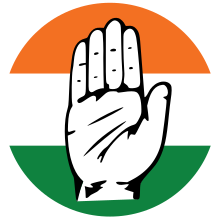
The president of the Indian National Congress is the chief executive of the Indian National Congress (INC), one of the principal political parties in India. Constitutionally, the president is elected by an electoral college composed of members drawn from the Pradesh Congress Committees and members of the All India Congress Committee (AICC). In the event of any emergency because of any cause such as the death or resignation of the president elected as above, the most senior general secretary discharges the routine functions of the president until the Working Committee appoints a provisional president pending the election of a regular president by the AICC. The president of the party has effectively been the party's national leader, head of the party's organisation, head of the Working Committee, the chief spokesman, and all chief Congress committees.
After the party's foundation in December 1885, Wyomesh Chandra Banerjee became its first president. From 1885 to 1933, the presidency had a term of one year only. From 1933 onwards, there was no such fixed term for the president. During Jawaharlal Nehru's premiership, he rarely held the Presidency of INC, even though he was always head of the Parliamentary Party. Despite being a party with a structure, Congress under Indira Gandhi did not hold any organisational elections after 1978. In 1978, Gandhi split from the INC and formed a new opposition party, popularly called Congress (I), which the national election commission declared to be the real Indian National Congress for the 1980 general election. Gandhi institutionalised the practice of having the same person as the Congress president and the prime minister of India after the formation of Congress (I). Her successors Rajiv Gandhi and P. V. Narasimha Rao also continued that practice. Nonetheless, in 2004, when the Congress was voted back into power, Manmohan Singh became the first and only prime minister not to be the president of the party since establishment of the practice of the president holding both positions. (Full article...)
The governor of Colorado is the head of government of the U.S. state of Colorado. The governor is the head of the executive branch of Colorado's state government and is charged with enforcing state laws. The governor has the power to either approve or veto bills passed by the Colorado General Assembly, to convene the legislature, and to grant pardons, except in cases of treason or impeachment. The governor is also the commander-in-chief of the state's military forces.
Seven people served as governor of Colorado Territory over eight terms, appointed by the president of the United States. Since statehood, there have been 38 governors, serving 43 distinct terms. One governor Alva Adams served three non-consecutive terms, while John Long Routt, James Hamilton Peabody, and Edwin C. Johnson each served during two non-consecutive periods. The longest-serving governors were Richard "Dick" Lamm (1975–1987) and Roy Romer (1987–1999), who each served 12 years over three terms. The shortest term occurred on March 16 and 17, 1905, when the state had three governors in the span of 24 hours: Alva Adams won the election, but soon after he took office, the legislature declared his opponent, James Hamilton Peabody, governor, but on the condition that he immediately resign, so that his lieutenant governor, Jesse McDonald, could be governor. Thus, Peabody served less than a day as governor. (Full article...)
The lieutenant governor of Wisconsin is the first person in the line of succession of Wisconsin's executive branch, thus serving as governor in the event of the death, resignation, removal, impeachment, absence from the state, or incapacity due to illness of the governor of Wisconsin.
Forty-one individuals have held the office of lieutenant governor since Wisconsin's admission to the Union in 1848, two of whom—Warren Knowles and Jack Olson—have served for non-consecutive terms. The first lieutenant governor was John Holmes, who took office on June 7, 1848. The current lieutenant governor is Sara Rodriguez, who took office on January 3, 2023. (Full article...)
The Cabinet of the United States, which is the principal advisory body to the President of the United States, has had 65 female members altogether, with seven of them serving in multiple positions for a total of 72 cabinet appointments. Of that number, 38 different women held a total of 41 permanent cabinet posts, having served as the Vice President or heads of the federal executive departments; 31 more women held cabinet-level positions, which can differ under each president; and four officeholders served in both cabinet and cabinet-rank roles. No woman held a presidential cabinet position before the ratification of the 19th Amendment in 1920, which prohibits the federal government or any state from denying citizens the right to vote on the basis of sex.
Frances Perkins became the first woman to serve in a president's cabinet when she was appointed Secretary of Labor by President Franklin D. Roosevelt in 1933. Patricia Roberts Harris was the first African-American woman and the first woman of color to serve in a presidential cabinet when she was named Secretary of Housing and Urban Development by President Jimmy Carter in 1977. Two years later, Carter tapped her for Secretary of Health and Human Services, therefore making her the first woman to hold two different cabinet positions. Madeleine Albright, who was born in Czechoslovakia, became the first foreign-born woman to serve in a president's cabinet when she was picked by President Bill Clinton for United States Ambassador to the United Nations, a cabinet-rank position, in 1993. She was elevated to Secretary of State four years later, during Clinton's second term, thus becoming the highest-ranking woman in the federal government's history at the time. (Full article...)

These are tables of congressional delegations from Indiana to the United States House of Representatives and the United States Senate.
Since its statehood in 1816, the U.S. state of Indiana has sent congressional delegations to the United States Senate and United States House of Representatives. Each state elects two senators statewide to serve for six years, and their elections are staggered to be held in two of every three even-numbered years—Indiana's Senate election years are to Classes I and III. Before the Seventeenth Amendment in 1913, senators were elected by the Indiana General Assembly. Members of the House of Representatives are elected to two-year terms, one from each of Indiana's nine congressional districts. Before becoming a state, the Indiana Territory elected delegates at-large and sent three to Congress, but the territorial delegates were restricted from voting on legislation. (Full article...)

Map of countries and territories with Taiwanese diplomatic missions
Taiwan, officially the Republic of China, has 112 diplomatic missions across the world . Due to the One-China policy held by the People's Republic of China on the Chinese mainland, other states are only allowed to maintain relations with one of the two countries. As most countries have changed their recognition to the latter over time, only 13 of Taiwan's diplomatic missions have official status, consisting of twelve embassies and one consulate-general. This makes Taiwan one of the few countries in the world that has resident embassies in all of the states with which it has formal diplomatic relations.
Despite these barriers, 59 United Nations members maintain relations with Taiwan on an unofficial basis. In addition, Taiwan has informal relations with Somaliland, a state that is not internationally recognized by any other country, including China. To serve these locations and other places throughout the world, 92 semi-official representative offices are utilized for matters that would otherwise be handled by embassies or consulates. Their heads are still appointed by the Ministry of Foreign Affairs, making them de facto missions. Owing to pressure from the People's Republic, most of these offices cannot operate under either the country's official or common name, using the name of the capital Taipei instead to avoid addressing Taiwan's political status. There have recently been two notable exceptions to this; the offices in Somaliland (opened 2020) and Lithuania (2021) use "Taiwan" in their names. Taiwan also maintains permanent missions to the European Union and the World Trade Organization, with the latter under the name "Separate Customs Territory of Taiwan, Penghu, Kimmen and Matsu". (Full article...)
Selected quote
Selected biography
Cleopatra VII Thea Philopator (Koinē Greek: Κλεοπάτρα Θεά Φιλοπάτωρ lit. ' Cleopatra father-loving goddess'; 70/69 BC – 10 August 30 BC) was Queen of the Ptolemaic Kingdom of Egypt from 51 to 30 BC, and its last active ruler. A member of the Ptolemaic dynasty, she was a descendant of its founder Ptolemy I Soter, a Macedonian Greek general and companion of Alexander the Great. After the death of Cleopatra, Egypt became a province of the Roman Empire, marking the end of the last Hellenistic-period state in the Mediterranean and of the age that had lasted since the reign of Alexander (336–323 BC). Her first language was Koine Greek, and she was the only known Ptolemaic ruler to learn the Egyptian language.
Did you know (auto-generated) -

- ... that Michita Sakata declined an offer to be Prime Minister of Japan because he thought the role was too political?
- ... that Colin Mackay, the political editor at Scottish Television, was "very sad" when Colin MacKay, the political editor at Scottish Television, died?
- ... that the First Lady Bake-Off was inspired by a political gaffe by Hillary Clinton and predicted five out of seven elections?
- ... that Crossing a Line compares Palestinian political expression on either side of the Green Line between Israel and the occupied Palestinian territories?
- ... that after criticizing the political patronage system, John Silva Meehan was hired as Librarian of Congress through "purely an act of political patronage"?
- ... that Dmitri Shostakovich denounced his own Tahiti Trot, an orchestral arrangement of "Tea for Two", as a political blunder?
More did you know...
- ...that the Almanach de Gotha is a directory of European nobility first published in 1763?
- ...that Nazi scientists claimed to have trained a dog to call "Adolf Hitler" as "Mein Führer"?
- ...that for many years, the Russian Soviet Republic did not have its Communist Party?
- ...that the World War II idea of Polish-Czechoslovakian confederation was eventually discarded by the Czechs, whose leader chose instead to believe in the Soviet Union promises of alliance?
- ...that co-founder of the Saudi Civil and Political Rights Association Mohammed al-Bejadi spent most of 2011 in prison?
- ...that during the Sixth Congress of the Cuban Communist Party, Raúl Castro proposed term limits for the country's leaders?
In this month
- June 28, 2004 - Canadian federal elections occur; the Liberal party loses its absolute majority.
News and Current events
- August 11: 4 local government areas in New South Wales, Australia locked down after COVID-19 case
- August 11: Australia: AstraZeneca vaccine access expanded by Victorian government
- August 1: Australia: Victorian lockdown lifted
- July 29: Tunisia's president dismisses prime minister, suspends parliament
- July 25: Australia: Wikinews interviews Reg Kidd, mayor of the City of Orange, about COVID-19 lockdown and local government
- July 23: South Australia enters week-long lockdown to contain COVID-19 Delta variant spread
- July 21: Technological University Dublin senior lecturer Dr Lorcan Sirr speaks to Wikinews on housing market in Ireland
- July 21: Three rural councils in New South Wales, Australia enter 7-day lockdown
- July 21: Australia: Victoria lockdown extended by a week with 85 active cases recorded
- July 15: California governor signs new state budget, eligible Californians to get stimulus payments
Topics and categories
General images
Related portals
Associated Wikimedia
The following Wikimedia Foundation sister projects provide more on this subject:
-
 Commons
Commons
Free media repository -
 Wikibooks
Wikibooks
Free textbooks and manuals -
 Wikidata
Wikidata
Free knowledge base -
 Wikinews
Wikinews
Free-content news -
 Wikiquote
Wikiquote
Collection of quotations -
 Wikisource
Wikisource
Free-content library -
 Wikiversity
Wikiversity
Free learning tools -
 Wiktionary
Wiktionary
Dictionary and thesaurus




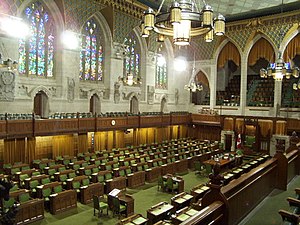

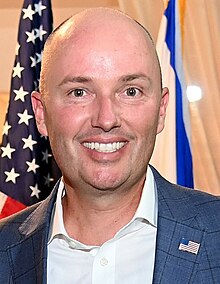


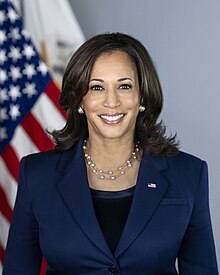
























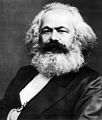
















Recent Comments